Ruth Ellen Gruber's Blog, page 28
November 6, 2010
Romania/Ukraine/Moldova -- New Book by Simon Geissbuehler
By Ruth Ellen Gruber
The Swiss diplomat Simon Geissbuehler, who has just completed a posting in Bucharest (and moved on to a new one in Warsaw), has published another book on Jewish traces in Eastern Europe. This one is called "Like Shells on a Shore: Synagogues and Jewish Cemeteries of Northern Moldavia" -- it is a slim monograph, essentially a travelogue that documents journeys that Simon took through neighboring parts of today's northern Romania, Ukraine and Moldova, mostly in an area demarcated by the Siret and Dniester rivers. An abbreviated account can be viewed online HERE.
Simon documents the Jewish sites her finds in the region, mainly synagogues and Jewish cemeteries, but he also gives thoughtful views on the nature of heritage, Jewish heritage and memory in these places -- memory that is fast receding if not already extinguished. He reluctantly concludes that there is little will or desire there to remember the destroyed Jewish world preserve its physical relics.
The most striking places that Simon documents in his book are the huge abandoned Jewish cemetery outside the remote village of Vadul Raskov, Moldova on the bank of the Dniester -- also documented in words and images in the Moldova Impressions blog
![[VR7.jpg]](https://i.gr-assets.com/images/S/compressed.photo.goodreads.com/hostedimages/1380443922i/1408723.jpg) Photo: Moldova Impressions blog -- and the ruins of a magnificent 18th century synagogue at Raskov, just across the river, in the self-proclaimed state of Transnistria.
Photo: Moldova Impressions blog -- and the ruins of a magnificent 18th century synagogue at Raskov, just across the river, in the self-proclaimed state of Transnistria.
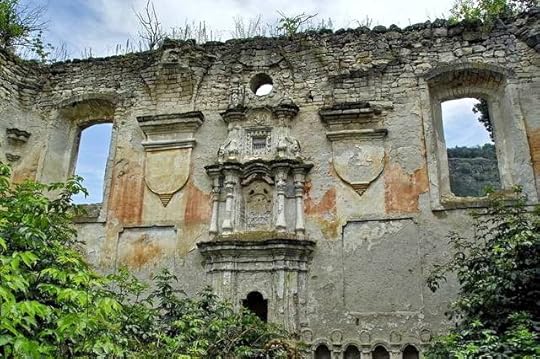 Photo by Sergey Bulanov, at http://www.panoramio.com/photo/11876585
Photo by Sergey Bulanov, at http://www.panoramio.com/photo/11876585
The Swiss diplomat Simon Geissbuehler, who has just completed a posting in Bucharest (and moved on to a new one in Warsaw), has published another book on Jewish traces in Eastern Europe. This one is called "Like Shells on a Shore: Synagogues and Jewish Cemeteries of Northern Moldavia" -- it is a slim monograph, essentially a travelogue that documents journeys that Simon took through neighboring parts of today's northern Romania, Ukraine and Moldova, mostly in an area demarcated by the Siret and Dniester rivers. An abbreviated account can be viewed online HERE.
Simon documents the Jewish sites her finds in the region, mainly synagogues and Jewish cemeteries, but he also gives thoughtful views on the nature of heritage, Jewish heritage and memory in these places -- memory that is fast receding if not already extinguished. He reluctantly concludes that there is little will or desire there to remember the destroyed Jewish world preserve its physical relics.
The most striking places that Simon documents in his book are the huge abandoned Jewish cemetery outside the remote village of Vadul Raskov, Moldova on the bank of the Dniester -- also documented in words and images in the Moldova Impressions blog
![[VR7.jpg]](https://i.gr-assets.com/images/S/compressed.photo.goodreads.com/hostedimages/1380443922i/1408723.jpg) Photo: Moldova Impressions blog -- and the ruins of a magnificent 18th century synagogue at Raskov, just across the river, in the self-proclaimed state of Transnistria.
Photo: Moldova Impressions blog -- and the ruins of a magnificent 18th century synagogue at Raskov, just across the river, in the self-proclaimed state of Transnistria. Photo by Sergey Bulanov, at http://www.panoramio.com/photo/11876585
Photo by Sergey Bulanov, at http://www.panoramio.com/photo/11876585
Published on November 06, 2010 14:35
October 26, 2010
New York/Poland -- Early Jewish Heritage Travel (1930s) exhibit in New York
Intro video for the exhibit, posted on YouTube
By Ruth Ellen Gruber
What looks like a wonderful and fascinating exhibit on Jewish heritage travel in the early 20th century has opened at the Yeshiva University Museum in New York. The title of the exhibit says it all: 16mm Postcards: Home Movies of American Jewish Visitors to 1930s Poland.
The exhibit
Adam Kirsch writes in Tablet Magazine that the exhibit

By Ruth Ellen Gruber
What looks like a wonderful and fascinating exhibit on Jewish heritage travel in the early 20th century has opened at the Yeshiva University Museum in New York. The title of the exhibit says it all: 16mm Postcards: Home Movies of American Jewish Visitors to 1930s Poland.
The exhibit
brings to life the landscape and people in Poland through the amateur movies of immigrant American Jews who traveled "back home" to visit their families, friends, and former communities in the 1920s and 1930s. Intended to be viewed by family and fellow landsmen (friends from the Old Country), these films offer a rare, intimate and—quite literally—moving picture of Jewish families, towns and society in pre-World War II Poland. This exhibition was developed in collaboration with the YIVO Institute for Jewish Research, and in cooperation with the Center for Jewish History.The films can be seen at the Center for Jewish History web site.
Adam Kirsch writes in Tablet Magazine that the exhibit
demonstrates how different things were in the early 20th century, when the ancestors of most American Jews came here from Eastern Europe. This extraordinary show consists of home movies—all silent, mostly fragmentary—taken by American Jews who visited their relatives in Poland in the 1930s. (Many of the films can be seen at the exhibition's website.) What makes these films so powerful is their extreme rarity: It was only a small handful of Jews who had the wherewithal, and the desire, to go back to the villages they had left behind decades earlier. And the encounters they document show how drastically the fates of American and Polish Jewry had diverged by the 1930s. In many films, we see the American cousin, prosperous and dressed in a Western suit, standing next to his poor, bearded, caftanned relatives; and it is impossible not to wonder what must have been going on in their minds and hearts.
Did the American cousin, clutching his camera like a badge of modernity, give thanks that he had been rescued from ancestral poverty and anti-Semitism—or did he feel nostalgia for the Jewish world from which he was cut off? Did the Polish cousin envy his American relative, or resent his intrusion, or long for his help? The pathos is infinitely greater, of course, because the viewer knows that all these Polish Jews—old and young, men and women and children—are just a few years away from the Holocaust. Virtually none of the people we see in these home movies was alive 10 years later. Because of the Holocaust, the natural growing-apart of the Old Country and the New World became an irreparable break, and a source of permanent guilt. Jews who came to America lived and flourished, while those who remained behind suffered and died: How can such a gulf ever be crossed?
The questions that "16 mm Postcards" raises, silently and by implication, are addressed head-on in a new book that might serve as a companion to the exhibition: The Glatstein Chronicles (Yale University Press). This is the title given by the volume's editor, Ruth Wisse, to two novellas published by the great Yiddish writer Jacob Glatstein in the late 1930s, based on his own pilgrimage to the Alte Heym. Glatstein was born in Lublin in 1896 and came to New York in 1914. After working for a time in sweatshops, he established himself as a Yiddish journalist, while writing poetry that brought the influence of Joyce, Eliot, and Pound to bear on Yiddish literature. "The term experimentation," Wisse writes in her introduction, "hardly suffices to describe the many subjects that Glatstein addresses, the poses he adopts, and the poetic variations he attempts."
Published on October 26, 2010 14:56
Poland -- detailed web pages on synagogue restoration
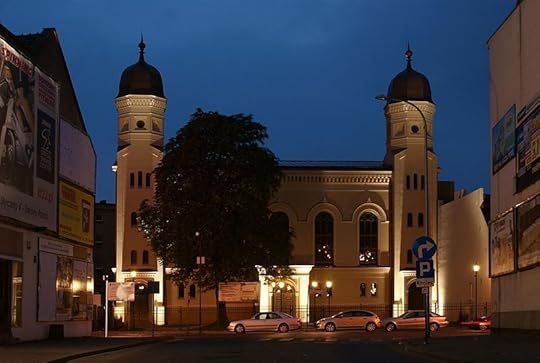 Synagogue facade illuminated. Photo: Wikicommons
Synagogue facade illuminated. Photo: Wikicommons By Ruth Ellen Gruber
The large Moorish-style synagogue in the southwest-central Polish town of Ostrow Wielkopolski, originally built in the late 1850s, has been under restoration this year -- and the town's web site has an ample set of pages documenting the process, including photographs, description in English as well as Polish, and also a video.
The 7 million zloty ($2.1 million) project is being financed primarily by the European Union, which is providing 70 percent of the funding, as well as by the city according to the web site. The city obtained ownership of the building in 2006, when the city paid 225,000 zloty (c. $75,000) to the Jewish community of Wroclaw in exchange for the community withdrawing its claim on the building. For its part, the city agreed to create lapidary memorials at the sites of the town's two destroyed Jewish cemeteries.
The exterior restoration has been completed (or nearly so) and work on the building's interior goes on.
Published on October 26, 2010 12:40
October 22, 2010
Slovakia -- Maros Borsky to speak in NYC about Slovak Jewish Heitage Route
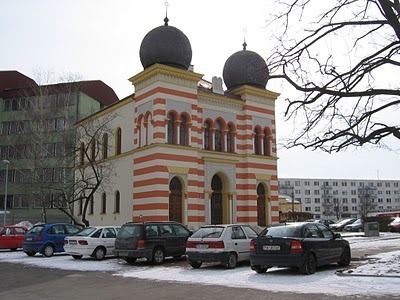 Former synagogue in Malacky, Slovakia. Photo (c) Ruth Ellen Gruber
Former synagogue in Malacky, Slovakia. Photo (c) Ruth Ellen GruberBy Ruth Ellen Gruber
My good friend Maros Borsky, the leading expert on Jewish heritage in Slovakia, will be speaking in New York on Nov. 1 at the YIVO Institute for Jewish Research about the Slovak Jewish Heritage Route that he began establishing in 2007.You can find details and make reservations for the talk by clicking HERE.
By now the Route links two dozen sites of Jewish heritage around the country -- from the capital, Bratislava, to Kosice and Bardejov in the far eastern tip of the country. Maros is one of the most serious and engaging people active in this field, and his presentation is sure to be exceptionally interesting.
From the web site:
The Slovak Jewish Heritage Route is a complex project that includes research, educational and promotional activities. It is aimed at advocating preservation of Jewish heritage in Slovakia as well as sustaining this attitude. These activities are to a great extend based on the results of the Synagoga Slovaca documentation project of synagogues, conducted in 2001-2006. The outcome of the survey (architectural plans, photographs, descriptions) is used to create an audience for Jewish culture in Slovakia, shape cultural policies and contribute towards improved site management.
We carry out the following activities to develop the Slovak Jewish Heritage Route: Survey of the yet undocumented built Jewish heritage. In addition to the completed documentation of synagogue architecture, the survey gathers data and photographic documentation on ritual baths, educational and other communal buildings, selected cemeteries and Holocaust memorial sites.The survey data will be included into the web database maintained as free public service at www.slovak-jewish-heritage.orgA photographic exhibition on Slovak synagogues is under preparation. It will promote Slovak Jewish heritage in Slovakia and abroad.Selected synagogues and other heritage sites will be soon marked with information plaques. These will create an identity for sites that are of historical importance, architectural value, cultural and tourist interest.Printed promotional material will be produced for important sites. Educational seminars and workshops will inform on the preservation and tourism opportunities of Jewish heritage.Local and international promotional activities will include lectures on Jewish history and culture, and close cooperation with media.
Published on October 22, 2010 15:08
October 21, 2010
Poland -- fascinating exhibit in Warsaw
by Ruth Ellen Gruber
A fascinating photographic exhibit opens in Warsaw next week -- it's about Jewish tombstones used for purposes other than marking a Jewish grave.
The opening of "Matzevot of Everyday Use" will take place at the Center for Contemporary Art, ul. Jazdow, at 7 p.m. on Oct. 28 and run for a month.

A fascinating photographic exhibit opens in Warsaw next week -- it's about Jewish tombstones used for purposes other than marking a Jewish grave.
The opening of "Matzevot of Everyday Use" will take place at the Center for Contemporary Art, ul. Jazdow, at 7 p.m. on Oct. 28 and run for a month.
Łukasz Baksik is the author of the photographs and the initiator of the exhibition. For many months, he has been searching for and taking photos of matzevot which had been taken from Jewish cemeteries and used as paving, building materials, grinding wheels, hones and graves at Christian cemeteries.I have seen many examples of this on my own travels.
'I have investigated what has happened with Jewish tombstones,' said the author. 'I found a household with a cowshed built from matzevot in the town center just near the police commissariat, fire brigade premises and the church. I also came across Catholic tombstones from which one had forgotten to rub off Hebrew letters. I talked to people who, being aware of what they had in their yards, did not consider it as something improper. I discovered the history of some relatives who were reunited after many years thanks to the one matzevah.'
Published on October 21, 2010 09:28
October 18, 2010
Czech Republic -- following Gustav Mahler's youthful footsteps
As noted in a previous post, I had a wonderful time last month following in the footsteps of the young Gustav Mahler in the Czech Republic. Here's the story in the IHT/NYTimes web site.

On the Trail of Gustav MahlerBy RUTH ELLEN GRUBERPublished: October 15, 2010 KALISTE, CZECH REPUBLIC — I slept very well in the house where Gustav Mahler was born, waking in the morning to the bright sound of chirping birds in the trees outside my window.
Once a shop and tavern run by the composer's father, Mahler's birthplace is now a snug, family-run pension whose amenities include a modern little concert hall as well as a cozy, wood-paneled pub.
Born on July 7, 1860, Mahler spent only the first few months of his life here before his family moved to the busy regional center of Jihlava, known in German as Iglau, about 30 kilometers, or 20 miles, away.
But Kaliste remains an essential stop for Mahler pilgrims, and I made the sleepy little hamlet my headquarters when I spent a late-summer weekend following the trail of the composer's early life in the beautiful Vysocina highlands of Bohemia and Moravia.
This year and next mark two Mahler anniversaries: 150 years since his birth in Kaliste and, in May, 100 years since his death in Vienna.
Kicked off by a gala commemorative concert in Kaliste on Mahler's birthday, the anniversaries are being celebrated with performances, festivals, exhibitions, publications, memorials, Web sites and other tributes.
I decided to visit the composer's boyhood haunts as my own way of paying homage. The Vysocina region, about halfway between Prague and Brno, is one of my favorite parts of the Czech Republic — in Mahler's day, of course, it formed part of the Austro-Hungarian Empire.
Although he moved to Vienna at the age of 15 to study music, Mahler returned frequently for holidays and drew lasting inspiration from the landscape and local traditions.
"Mahler needs a remembrance of boyhood sights and sounds before he can write a note," wrote the British critic Norman Lebrecht in "Why Mahler?: How One Man and Ten Symphonies Changed the World," a biography of the composer that came out this year.
Setting off from Kaliste, I followed narrow back routes through stately forests and rolling fields. Heavily laden apple and plum trees lined many of the winding roads, and goldenrod flecked the fields where corn stood tall, waiting for the harvest.
With Mahler's symphonies playing loudly on the car stereo, I could easily appreciate how landscape and memory were powerfully reflected in the music.
"We would go for walks lasting half the day," Mahler's boyhood friend Fritz Lohr once recalled, "wandering among flowery meadows, by abundant streams and pools, through the great woods, and to villages where authentic Bohemian musicians set lads and lasses dancing in the open air." I drove north to Ledec nad Sazavou, a small town on the Sazava River dominated by a soaring castle.
Mahler's beloved mother, Marie, came from Ledec, and as a child, Mahler frequently visited his relatives there. The story goes that his grandfather Abraham Herrmann, a wealthy soap manufacturer, introduced the 4-year-old Gustav to music by letting him play an old piano stored in his attic.
Herrmann and his wife, Theresia, are buried side by side in the Ledec Jewish cemetery, a centuries-old graveyard that is reached through a gate from the municipal cemetery at the edge of town. The synagogue in Ledec — where some accounts say that the infant Gustav's circumcision ceremony took place — still stands. Built in 1739, it was restored some years ago and now serves as a concert and exhibition hall.
From Ledec, it's a 25-minute drive to Zeliv, a village at the confluence of the Zelivka and Trnava rivers. When he was a student, Mahler would come here on vacation to visit his friend Emil Freund, and it was in Zeliv that he had his first romantic involvement, with a cousin of Emil's named Marie Freund.
Zeliv's main attraction is a sprawling monastery complex, dominated by the majestic church of the Nativity of the Virgin Mary. The monastery was closed down during the communist era, but religious life resumed in 1991, and today white-robed monks lead regular services in the ornate sanctuary of the church.
The little town of Humpolec makes a triangle with Zeliv and Kaliste. It was market day when I arrived, and I threaded my way through the stalls on the main square to get to the town museum, where a small permanent exhibition of photographs, documents and other material on Mahler opened in 1986.
Mahler's paternal grandparents and other Mahler relatives are buried in the walled and tree-shaded Jewish cemetery, which lies just outside town in parkland beneath the ruins of the medieval Orlik Castle. The Freund family, including Marie, who committed suicide in 1880, also are buried here.
The Humpolec synagogue still stands near the center of town, but it now serves as a church. Jihlava, where Mahler lived from infancy until he left to study in Vienna in 1875, was my last stop on this exploration of his youth.
Many specific sites in the town are connected with Mahler's boyhood and family life: the towering St. Jakub Church is said to be the where Mahler, who converted to Roman Catholicism in 1897, first heard a Mass.
The house at 4 Znojemska, where the family lived, is just a few steps from the large and graceful main square — which today is somewhat blighted by a modern commercial structure in its center.
The Mahler house now serves as a museum that focuses on his family and his relationship with Jihlava and the surrounding region, as well as on the Czech, German and Jewish traditions that made up the cultural landscape of his time.
Mahler's parents are buried in the Jewish cemetery, but the synagogue was destroyed by the Germans in 1939. The ruins of its foundations have now been incorporated into what is called Gustav Mahler Park, a rather jarring sculptural arrangement reminiscent of Stonehenge that centers on a bizarrely attenuated statue of the composer.
The park was opened this summer as part of Mahler anniversary celebrations. The day I visited, a bride and groom were using it as a backdrop for their wedding photos.
More information is online. For the Czech Mahler Trail, go to gustavmahler2010.cz; the Mahler Pension in Kaliste, mahler-penzion.cz/en/; and the Mahler House Museum in Jihlava, mahler.cz/en/
Published on October 18, 2010 08:12
October 14, 2010
Belarus -- Chagall's memory, officialdom and Vitebsk
Tablet Magazine runs an article by Judith Matloff about how authorities in Belarus have exalted Marc Chagall to a local hero in his native town, Vitebsk. The article quotes me briefly noting how newly independent countries have seized on various figures (Jewish and non) with a sometimes very loose relationship to the place where they were born as local heroes. I had mentioned to the author the case of Slovakia, where John Dopyera, the inventor of the dobro (resonator guitar) had immigrated to the United States with his family as a teenager. Dopyera was long described as a Czech or Soviet, and it was only in 1989 that his Slovak origin was rediscovered. Enthusiasts set up a Dobrofest, and I believe that even a Slovak postage stamp was issued in Dopyera's honor.
In the context of this post (and the Chagall article) I want to highlight again, as I have done previously on this blog, the work being carried out by the Jewish Heritage Research Group in Belarus. Click this link for their web page on Vitebsk.
Read full article at tabletmag.org
In the context of this post (and the Chagall article) I want to highlight again, as I have done previously on this blog, the work being carried out by the Jewish Heritage Research Group in Belarus. Click this link for their web page on Vitebsk.
Favorite Son -- Belarus embraces Chagall but leaves his Jewishness at the door
By Judith Matloff | Oct 14, 2010
In Belarus, Europe's last Communist-style dictatorship, tourism is not a big business. So I was intrigued to see busloads of sightseers roll through the city of Vitebsk during a recent visit there. Their destination, as it happened, was a trail paying homage to the country's most famous native son, painter Marc Chagall. In a burst of nationalism, the country's culture czars are eager to set the record straight that the 20th century's most recognizable Jewish artist was not Russian, as commonly believed. They also realize that they can cash in on his name.
The glorification is such that Vitebsk, his birthplace, remembers Chagall with no fewer than three bronze statues in his image–a rare honor for anyone here other than Lenin. A day is set aside each year to pay homage to the modernist pioneer, with open-air celebrations including everything from international scholars to live goats like those featured in his work. Tourist attractions include the art school that Chagall founded in 1919 and a museum made up of the modest brick house where he grew up and exhibition space for some 300 of his works. The collection may not be as impressive as the one housed at the Chagall Museum in Nice, France, but the crowds here seem enthusiastic enough, judging from all the leggy women who sprawled on the statues for snapshots.
Lionizing the artist, says the Vitebsk museum's director, Ludmila Khmelnitskaya, has been a way to assert national identity since the Soviet Union collapsed in 1991. The Belarusian language is now taught at schools and, as a recent gas dispute with Russia showed, the government chafes when Moscow tries to boss it around. According to Khmelnitskaya, most Belarusians had never heard of Chagall before the museum opened in 1992, but the number of visitors it attracts has grown to 20,000 a year.
"It's important to return his memory to the culture of Belarus," Khmelnitskaya said, adding that Soviet encyclopedias listed him as from France, where he spent the bulk of his later years. His name was absent from histories of Belarusian art. "Chagall's work reflects his memory of the city, yet he's been neglected in the country where he was born."
The embrace of Chagall, an outcast Jew under the Soviets, is not unusual for young states in Eastern Europe, said Ruth Ellen Gruber, an authority on Jewish heritage travel. In Slovakia, the 19th-century rabbi known as the Chatam Sofer is being heralded as a national historic figure alongside non-Jewish notables. His tomb is on the list of tourist sites. "Newly independent countries—and especially newly independent countries trying to assert their national identity—look for local heroes, prominent figures they can claim as their own and who can set them apart from countries that once dominated them," Gruber said.
Read full article at tabletmag.org
Published on October 14, 2010 08:36
October 9, 2010
Way off Geographic Topic but interesting (and related)
I've been in California for the past couple of weeks, very busy with a series of lectures and family commitments, so have not posted anything recently.
This past week, though, I spent a day in the Gold Rush region of northeastern California, visiting the town of Placerville and also Sutter's Mill, where the first gold was found that sparked the 1849 Gold Rush. (I stayed at the "Motherlode Motel".)
My friend Francesco Spagnolo, of the Magnes Museum in Berkeley -- which has an extraordinarily rich collection of Jewish history and culture in the American West -- had mentioned to me that there was a Pioneer Jewish cemetery in Placerville -- so of course I found it and took pictures. A tiny plot with about 18 markers, very well maintained, in a shaded corner of a residential neighborhood just off Highway 50.
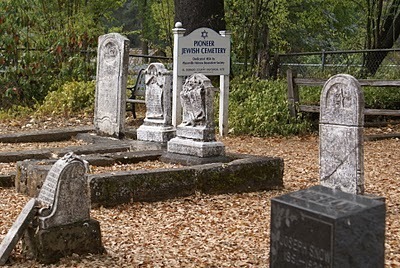
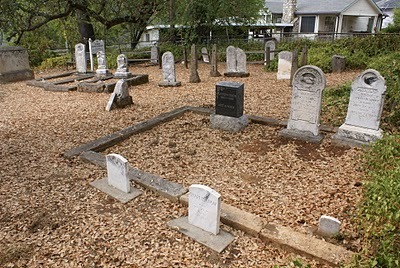
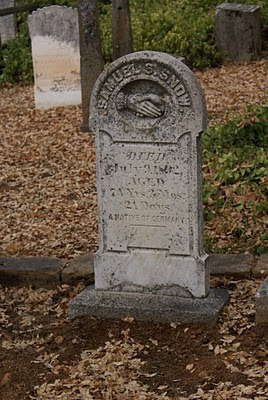
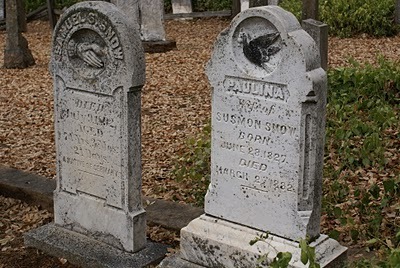
In fact, there are about half a dozen Jewish cemeteries in the Gold Rush region -- in the towns of Jackson, Mokelumne Hill, Sonora, Placerville, Grass Valley, and Nevada City. The Magnes Museum has a wonderful collection of photographs documenting them. Taken by the photographer Ira Nowinski in the mid 1980s, these have been posted online as a Flickr gallery. They show some charming iconography -- including one carved image of a wife and children mourning at the tomb of the father/husband.
This past week, though, I spent a day in the Gold Rush region of northeastern California, visiting the town of Placerville and also Sutter's Mill, where the first gold was found that sparked the 1849 Gold Rush. (I stayed at the "Motherlode Motel".)
My friend Francesco Spagnolo, of the Magnes Museum in Berkeley -- which has an extraordinarily rich collection of Jewish history and culture in the American West -- had mentioned to me that there was a Pioneer Jewish cemetery in Placerville -- so of course I found it and took pictures. A tiny plot with about 18 markers, very well maintained, in a shaded corner of a residential neighborhood just off Highway 50.




In fact, there are about half a dozen Jewish cemeteries in the Gold Rush region -- in the towns of Jackson, Mokelumne Hill, Sonora, Placerville, Grass Valley, and Nevada City. The Magnes Museum has a wonderful collection of photographs documenting them. Taken by the photographer Ira Nowinski in the mid 1980s, these have been posted online as a Flickr gallery. They show some charming iconography -- including one carved image of a wife and children mourning at the tomb of the father/husband.
Published on October 09, 2010 18:47
September 21, 2010
United States -- neglected Jewish cemeteries are also an issue
Sue Fishkoff has written an important article on JTA highlighting the plight of abandoned Jewish cemeteries -- not in Eastern Europe, but in the United States. Brava Sue!
The plight is far worse in Europe, where thousands of cemeteries lie abandoned in the wake of the Holocaust. But it is important for North American Jews to recognize that there is a similar issue exists "at home," wherever Jews have moved away or moved on. Sue cites the Jewish Cemetery Project of the International Association...
The plight is far worse in Europe, where thousands of cemeteries lie abandoned in the wake of the Holocaust. But it is important for North American Jews to recognize that there is a similar issue exists "at home," wherever Jews have moved away or moved on. Sue cites the Jewish Cemetery Project of the International Association...
Published on September 21, 2010 01:52
Czech Republic -- interesting web site with photo galleries
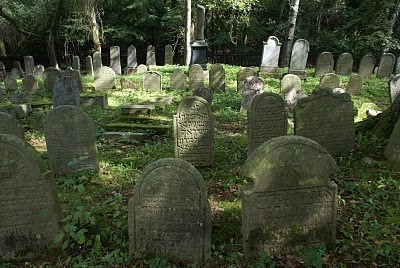 Jewish cemetery in Ledec nad Sazavou, with the tombs of Gustav Mahler's grandparents at the rear. Photo (c) Ruth Ellen Gruber
Jewish cemetery in Ledec nad Sazavou, with the tombs of Gustav Mahler's grandparents at the rear. Photo (c) Ruth Ellen GruberI've just come across this ample web site, zidovskehrbitov.cz, with photo galleries of several dozen Jewish cemeteries in the Czech Republic, as well as other information. The name of the site means "Jewish cemetery."
The web site is in Czech -- but you don't need the language to look at the pictures, which provide general views of cemeteries as well as detail of some o...
Published on September 21, 2010 01:40



